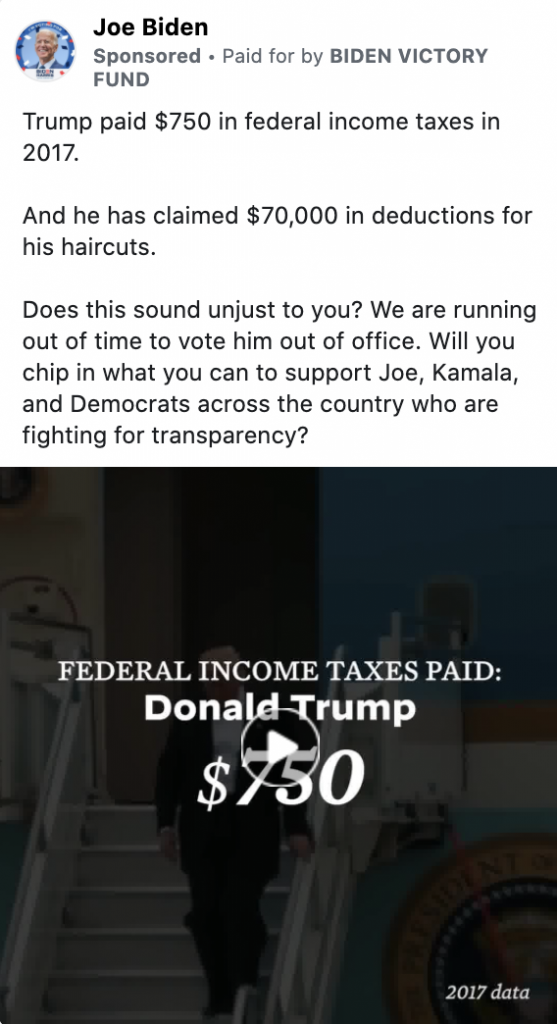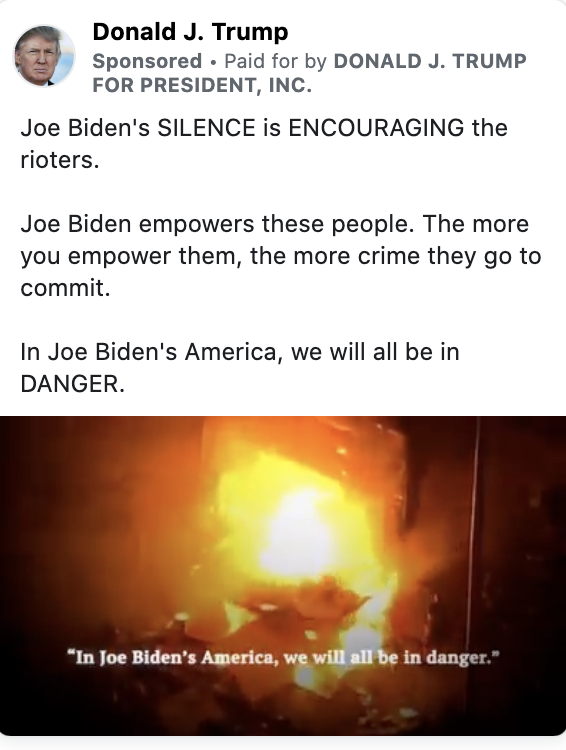
In the 2016 election, President Trump won Wisconsin by less than 23,000 votes or 0.7%, one of the narrowest margins in the country. Since 1988, the Democratic presidential candidate won the state in every election until the shift in 2016, as the blue-collar workers in rural Wisconsin favored the anti-establishment candidate while many Democrats stayed home on election day instead of casting their vote for Clinton. Heading into the 2020 election, the state’s battleground status remains. However, polling throughout the campaign and unanticipated external factors may make this race more decisive than that of 2016.
According to the most recent poll conducted by Marquette Law School, 46% of the 806 registered voters polled said they would be voting for Biden while only 41% said they would be voting for Trump. In a separate poll conducted by Marquette Law School during the same period, 47% of likely voters polled said they would be voting for Biden and 42% would be voting for Trump. A poll conducted by the University of Wisconsin-Madison two weeks prior yielded similar results, with a 5 point margin between the candidates.
As Trump continues to lag behind in the polls of many key swing states, advertisements and appearances in states like Wisconsin are a last-ditch effort to win back voters. Between June 1 and Oct. 18, Trump has allocated $2,433,417 to advertising in Wisconsin. Biden, on the other hand, spent more in Wisconsin, spending an estimated $3,192,381 since the beginning of June.

While Biden is outspending Trump in many battleground states according to estimates by the Illuminating 2020 Project, the candidates are allocating their spending on Facebook and Instagram advertising differently. Out of the 12 battleground states, both candidates are focusing large sums of money in Florida and Pennsylvania. Both candidates are also spending nearly the same amount in North Carolina. Other than these spending similarities, their strategy begins to differ greatly. Biden is spending an estimated $4.8 million on ads in Michigan, while Trump is spending over a million less. Instead, Trump has focused that amount in Texas where he is spending close to $4.1 million. Trump is outspending Biden in Ohio by almost $2 million, a state he won in 2016, and is in almost a dead heat with Biden in the polls. Biden is instead more focused on Arizona, a state he is leading in the polls and that was won by Trump in 2016. Just as the two candidates have different strategies when it comes to targeting swing states, the types of ads they choose to spend their money on also differs.
Message Type
When looking at the messaging Biden had used in his ads thus far, the ads he has run in Wisconsin do not differ greatly from the ads he has run in other states or from the campaign as a whole. He is spending the majority of his money on Call to Action ads with Persona ad types following narrowly behind both in Wisconsin and nationally. He is spending more on Advocacy and Attack ads than he is nationally, which is unsurprising given the closeness of the race in this state. However, Trump’s advertisements running in Wisconsin have a slightly different focus than that of other swing states and his advertisements as a whole. To learn more about our message type categories, click here.
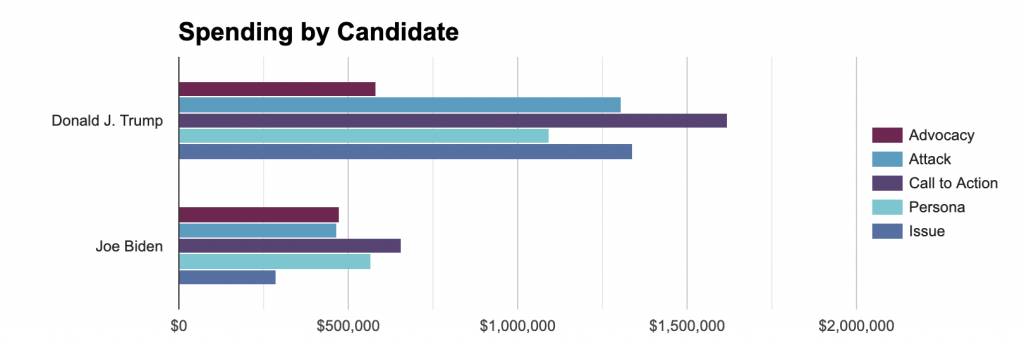
When looking at spending per message type category for Trump’s overall advertising strategy for all 50 states, he is spending the most money on Call to Action ads with Persona next in line and Issue and Attack related ads trailing fairly significantly. In Wisconsin, Call to Action ads remain Trump’s primary focus. However, Issue related ads follow right behind Call to Action with an estimated $1,339,748. Attack ads follow closely behind Issue related ads, with once again about $1.3 million spent on the attack. Compared to his overall spending, his increased focus on Attack ads in Wisconsin is likely due to its battleground state status and his standing in the polls. While incumbents typically attack less in their advertisements than their competitors, Trump and his campaign have not followed this precedent. Following the trend with his spending on Wisconsin since June 1, his spending on attack ads sharply increased during the week of the first debate on Sept. 29, and the week of his planned appearance in La Crosse and Green Bay later canceled due to the President’s COVID-19 diagnosis and statewide COVID-19 surge.
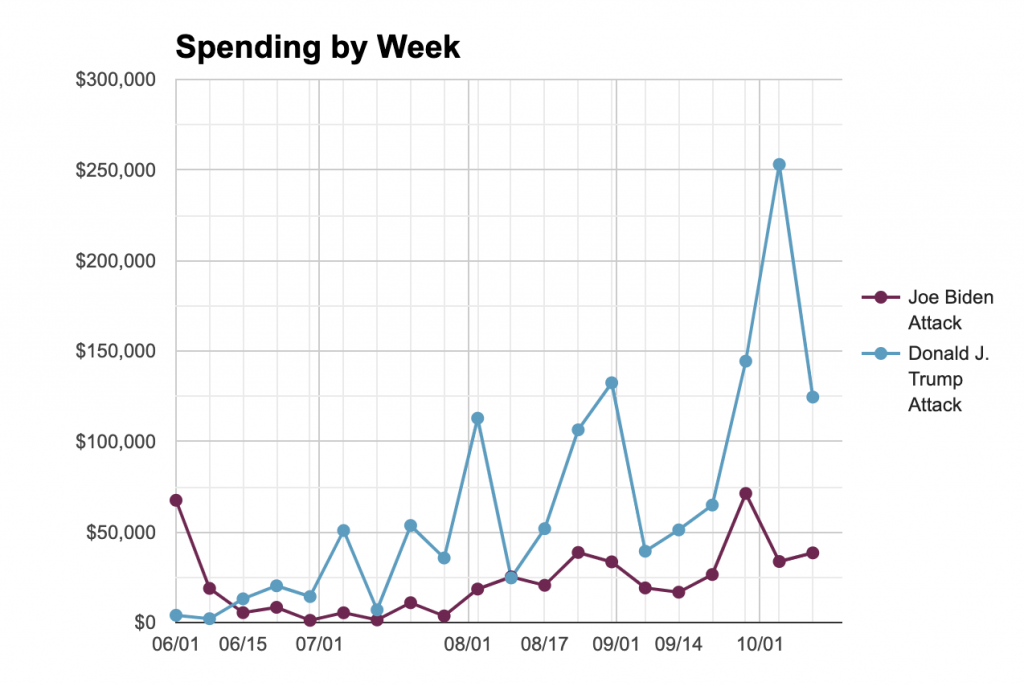
Message Topic
When analyzing each candidate’s primary message topics used in their Wisconsin advertisements, they both differ from each other and from their overall spending. When looking at Trump’s top message topic spending in Wisconsin, he is spending the most on Safety related ads, spending an estimated $221,474 on messages incorporating crime or safety-related rhetoric. Despite it being Trump’s top message topic in all 50 states, the Governance topic is virtually tied for second with Economic messaging in Wisconsin. Compared to his overall spending across all regions, Trump is focusing more of his money on Economic related ads in Wisconsin. To learn more about our message topic classification, click here.
When looking at Biden’s overall ad spending, he focuses most of his money on Social & Cultural related ads, with Economic and Foreign Policy ad spending in second. In Wisconsin, his strategy differs. Biden’s top spending topic is Economic, spending an estimated $123,487 on these advertisements. He also allocated more money on COVID-19 related ads in Wisconsin, surpassing his spending for Social & Cultural ads. Trump and Biden’s spending is vastly different in amount and topic. However, their strategies may differ in order to cater to their base and mobilize voters.
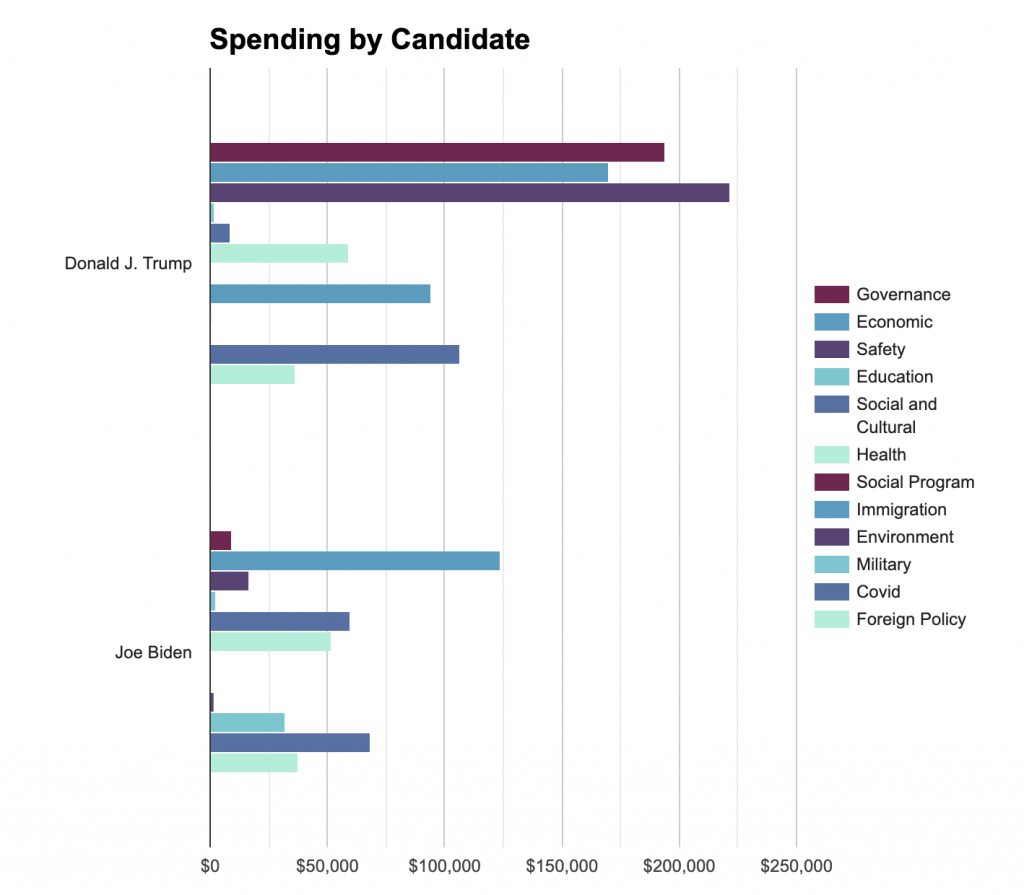
In Marquette Law School’s most recent poll, 53% of those polled in Wisconsin stated that they think the economy has gotten worse over the last year and 43% say the economy is either going to get worse or stay the same. With its state economy being driven by manufacturing and agriculture, job creation and overall job support in these areas are likely to be topics of concern for Wisconsin voters, which is why both of these candidates advertise heavily with this topic in mind. With the majority of voters and those polled being dissatisfied with the current economy, Biden is likely allocating the most money to this topic to capitalize on these voters’ opinions. In his ads, Biden not only attacks Trump by highlighting his lack of job creation, but also releases ads highlighting his own record with handling the 2008 recession to remind voters during his economic downturn. Trump, however, uses ads to defend his record and attack his opponent for his.
Voters in Marquette Law School’s poll also expressed their opinions on the pandemic and President Trump’s handling of the virus. When asked how they felt President Trump is handling this recent health crisis, 56% of respondents stated that they disapproved of his actions or lack thereof. When this same group of voters was asked to define their personal level of concern about the coronavirus, 34% stated they were somewhat worried and 27% stated they were very worried about COVID-19 and its potential effects. With the majority of Wisconsin voters expressing their concern about the coronavirus coupled with their disapproval with Trump’s handling of the virus, this is an issue that Wisconsin voters want to hear about. This explains Biden’s use of COVID-19 related ads in Wisconsin, the majority of which are attacking Trump’s response and advertising Biden’s ability to improve the country’s current situation. As Wisconsin has become a COVID-19 hot spot in the past few weeks with now well over 3,000 new cases a day, Biden’s messaging has continued to focus on Trump’s response and the economic effects that the virus has had on Wisconsin as a result of this response.
Although Trump has chosen a different approach to appeal to Wisconsin voters, his focus on Safety and Governance related ads may also be for good reason. Looking at that same poll, a large portion of those asked, 49% of registered voters, responded by saying they disapproved of the mass protests after the death of George Floyd. After the Kenosha, WI police shooting of Jacob Blake in August 2020, the protests hit very close to home for many Wisconsin residents. Trump’s spending on advertisements promoting safety is likely a result of this, as he is trying to relate to Wisconsin voters who are unsure or are not totally on board with the recent protests happening in their state. In terms of Trump’s Governance related ads, we see a large spike in spending the week of Sept. 21 following the death of Supreme Court Justice Ruth Bader Ginsburg. Despite 51% of those polled thinking that the nomination of a new justice should wait until after the election, Trump seems to be trying to appeal to the undecided voters and those supporting the nomination with these ads. His Governance ads in Wisconsin primarily are focused on the Supreme Court and attacking Biden for being the establishment candidate.
While Biden continues to lead Wisconsin in the polls as it gets closer and closer to Nov. 3, the unpredictable nature of this state makes Wisconsin a must-watch. In 2016, FiveThirty Eight gave Hillary Clinton an 83.5% chance of winning Wisconsin, demonstrating that just about anything can happen in these final days leading up to election day. To put their best foot forward, both candidates are using advertising to highlight their strategic advantages. Whether they are focusing on the pandemic or issues like the Supreme Court and protests, it remains to be seen which of these strategies may help win over Wisconsin voters and provide them with 10 more electoral votes towards the necessary 270.
All data is accurate as of date of publication. All spending and impression amounts are estimates based on data provided by the Facebook Ad Library API. Featured image by Vincent van Zalinge on Unsplash

